Mozambique and Eswatini promise to boost cooperation
Filipe Samuel Magaia: A heroic journey

Domingo / Filipe Samuel Magaia's statue in Maputo
Filipe Samuel Magaia’s heroic journey is taken as given by his companions and family, and had its beginning in a childhood which demonstrated leadership capacity and discipline.
Eldest sister Marta Magaia revealed that the national hero was always a disciplined person who demanded responsibility from people in all that they did.
She says her brother demonstrated leadership skills that early on, directing friends and graduates as he had seen in Chinese military films of the time. She says he embraced the revolutionary spirit from an early age, the reason for his friendship with nationalists and people who identified with the liberation of the motherland.
His experience of the inhumane aspects of Portuguese colonial rule increased his interest in freedom and his uncompromising conduct, and led to the founding of the Nucleus of African Nationalist Students (NESAN) which included Eduardo Mondlane, Joaquim Alberto Chissano, Armando Guebuza among its members.
Magaia was recruited for colonial military service in 1958 and sent to Nampula for 18 months. After that he was called to the Mozambique Railways (CFM), where he had applied for a job, based in the city of Beira. It was from here that he left to join Frelimo, without being able to say goodbye to his family.
“When Filipe went to Tanzania, he did not say goodbye to anyone and we only found out when we received a note in which he warned us not to send any more letters to him because he was no longer in Beira,” Marta Magaia said.
Because of this, PIDE (the Portuguese colonial secret police) raided the house several times and repeatedly interrogated her mother, Ana Albino Perreira, who they mistreated because she was unable to explain the whereabouts of the son.
Filipe Samuel Magaia was born on March 7, 1937, in Mocuba, Zambézia province, son of Gunguene Magaia, a nurse by profession, and Ana Albino Pereira. He began his primary studies at the Wesleyan Methodist Church School in Mavalane, and finished Grade 4 at the São Roque de Matutuíne Mission School, where his father had been transferred.
When his father returned to Maputo (then Loureço Marques) Magaia attended the Dr. Azevedo Silva Commercial School, now the Commercial Institute of Maputo, from 1952 to 1953.
In 1962, he joined Frelimo, where he was first secretary of the Department of Defence, and the following year opened a training camp in Bagamoyo, Tanzania. He was assassinated on 11 October 1966 when he was leading a group of guerrillas on a mission in Niassa province and his body was buried in Songea, Tanzania. His remains were transferred to the crypt in Heroes’ Square in Maputo in 1979.
Filipe Samuel Magaia was the second of a total of thirteen brothers and sisters, namely Marta, Natalia, Domingos, Emília, Fátima, Manuel, Delfina, Elisa, Ignacio, Carlos, Beleza and Aurora, of whom seven are still alive.
Man of courage and discipline
Magaia’s comrade in arms Alberto Chipande said that determination, courage and discipline were the national hero’s main virtues.
“Magaia had a patriotic and disciplined spirit. Until the day of his death he was a determined man, a lucid military man, an excellent military trainer, a strategic commander, a visionary mobiliser and a brave nationalist. He was a source of inspiration for the Frelimo guerrillas,” Chipande says.
He added that it was Magaia who organised the Department of Defence and led the fight on fronts in Cabo Delgado, Niassa, Tete and Zambézia, making it difficult to describe a man of such his abilities.
Many episodes in his life revealed his spirit of sacrifice, bravery and total dedication to the cause of national liberation.
A trajectory intertwined with the history of Frelimo
Secretary general of the Combatants of the National Liberation Struggle (ACLLN) Fernando Faustino argues that the life of Filipe Samuel Magaia is intimately connected with the history of Frelimo because he cooperated in building the sovereign state of democratic law and was responsible for rescuing the identity of the Mozambican people.
“Magaia fought against racial segregation and oppression based on the exploitation of man by man. The attitudes and practices of the Portuguese colonial regime made him understand very early on that he had been born a slave and had to fight for his freedom,” he said.
Faustino said Magaia used all available resources a self-sacrificing way, once having begun the process of schooling and maturing his ideas of struggle against the Portuguese colonial regime, noting how he was always active, an energetic and multidisciplinary leader. He was very friendly, but in the trenches exercised strict military discipline.
“He is the one who developed Frelimo’s Department of Defence and Security strategy. At the very beginning of the armed struggle he oversaw the structuring, framing and training of the first guerrillas in the military camps of Bagamoyo and Kongwa and their sending to the provinces of Cabo Delgado, Niassa, Zambezia and Tete,” Matsinhe said.
He says that Filipe Samuel Magaia was a zealous, courageous and fearless commander, concerned with the material and social aspects of guerrilla life and known for his hands-on management of resources. Another source of the success of Filipe Samuel Magaia was the way he assumed, reinterpreted and implemented the essence of national unity and the permanent dialogue between the guerrillas and the population that was its social base and strategic partner in the struggle for national liberation.
The statue
In Magaia’s honour, the government erected a statue in the Chamanculo neighbourhood “C”, at the roundabout of the Junta bus terminal in Maputo. Bronze, about three meters high and weighing about three tons, it was conceived by Mozambican sculptor Pompílio Gemuce.
Its construction began with a clay model of about a metre-and-a-half high, which was scanned and sent to the Republic of South Africa to be enlarged to its current height and cast in bronze. The statue is dressed in military uniform with a backpack, a gun and binoculars in hand.
Murals around the monument depict Magaia’s life and work and include five plaques, painted the colours of the national flag, bearing the testimonies of his comrades-in-arms Feliciano Gundana, Alberto Chipande, Raimundo Pachinuapa, Mariano Matsinhe and Coronel Romoja.


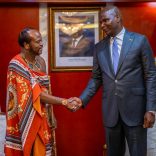
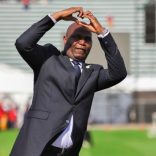

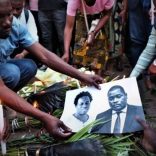
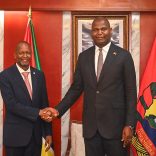
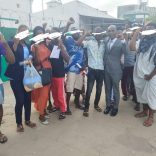
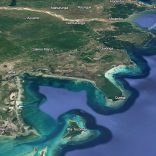
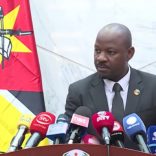
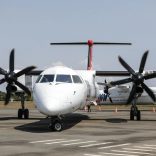

Leave a Reply
Be the First to Comment!
You must be logged in to post a comment.
You must be logged in to post a comment.